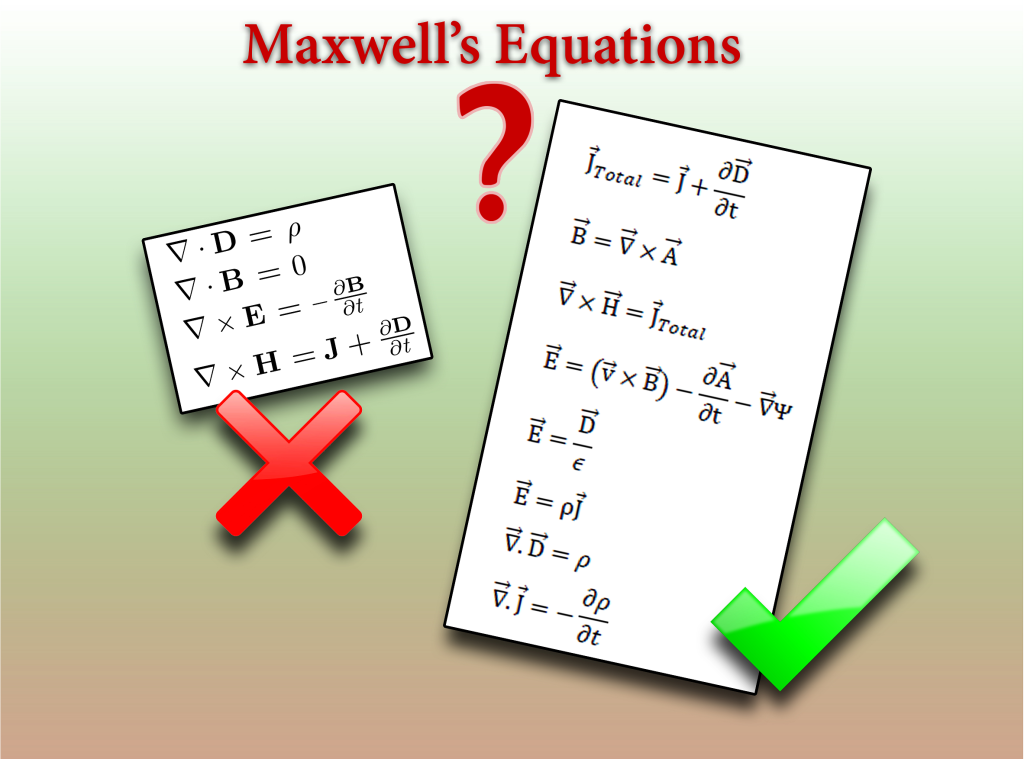Why you believe he derived only 4 equations? Just because your textbook and consensus says? Why not read the original papers and books of Maxwell itself. They are all rotting in archive.org.
For your kind information the so-called Maxwell’s equation used today are actually Heaviside equations.

Maxwell compiled 8 sets of quaternion equations form the experimental findings of Faraday, Gauss, Ampere, Ohm, Weber, Helmholtz, Kohlrausch etc. and converted them into symbolic calculation methods, in his paper A Dynamic Theory of Electromagnetic Field.

Maxwell’s only original contribution is displacement current.
If you expand the vector into component form, there will be total twenty equations involving twenty variable quantities, as you can see in below.

As vector notation were not there at his time, hence all vector equations are written in individual component form.
He thought that certain phenomena in electricity and magnetism lead to the same conclusion as those of optics, namely, that there is an aethereal medium pervading all bodies, and modified only in degree by their presence; that the parts of this medium are capable of being set in motion by electric currents and magnets; that this motion is communicated from one part of the medium to another by forces arising from the connections of those parts; that under the action of these forces there is a certain yielding depending on the elasticity of these connections; and that therefore energy in two different forms may exist in the medium, the one form being the actual energy of motion of its parts, and the other being the potential energy stored up in the connections, in virtue of their elasticity.
We know that when an electric current is established in a conducting circuit, the neighboring part of field is characterized by certain magnetic properties, and that if two circuits are in the field, the magnetic properties of the field due to the two currents are combined. Thus each part of the field is in connection with both currents, and the two currents are put in connection with each other in virtue of their connection with the magnetization of the field.
The first result of this connection that I propose to examine, is the induction of one current by another, and by the motion of conductors in the field.
The second result, which is deduced from this, is the mechanical action between conductors carrying currents. This phenomenon was deduced by Helmholtz and W Thomson. Maxwell followed the reverse order and deduced the mechanical action from the law of induction.
He then applied the phenomena of induction and attraction of currents to the exploration of the electromagnetic field, and the laying down system of lines of magnetic force which indicate its magnetic properties.
He used 8 sets of question A-H as I mentioned at the beginning. They represents following:
(A) The relation between electric displacement, true condition, and total current, compounded of both.
(B) The relation between the lines of magnetic force and the inductive coefficients of a circuit, as already deducted from the laws of induction.
(C) The relation between the strength of a current and its magnetic effects, according to the electromagnetic system of measurement.
(D) The value of the electromotive force in a body, as arising from the motion of the body in the field, the alteration of the field itself, and the variation of electric potential from one part of the field to another.
(E) The relation between an electric displacement, and electromotive force which produced it.
(F) The relation between an electric current, and the electromotive force which produces it.
(G) The relation between the amount of free electricity at any point, and the electric displacements in the neighborhood.
(H) The relation between the increase or diminution of free electricity and the electric currents in the neighborhood.
He determined the mechanical force acting 1st, on a movable conductor carrying an electric current; 2ndly, on a magnetic pole; 3rdly, on an electrified body.
The last result, namely, the mechanical force acting on an electrified body, gives rise to an independent method of electrical measurement founded on its electrostatic effects. The relation between the units employed in the two methods is shown to depend on what he called the “electric elasticity” (now reciprocal of permittivity) of the medium, and to be a velocity, which has been experimentally determined by Weber and Kohlrausch.
The displacement current leads to the possibility of wave propagation in free space. This also lead to the possibility of electric lines of force forming closed loops, independent of any charge. This evolves the way of primitive thinking that current is not something inside the conductor like water in a pipe, rather all around the space surrounding it. Unfortunately today this thinking has taken a backseat.
It’s Oliver Heaviside who invented his vector calculus to downgrade and simplify Maxwell equations into 4 vector form which we “incorrectly” address as Maxwell’s equations.
Heaviside gave birth to practical electrical engineering by solving transatlantic cable problem. He wanted to establish telephone lines. So he removed the scalar and vector potential and force equation from Maxwell original sets of equation to make it more practical, also limited.
Potentials can lead to realization of longitudinal waves also which would be considered impossible as per Heaviside equation.
Unfortunately, due to academic laziness, these truncated equations are still dominating in industry and claimed as Maxwell’s.